Understanding and Appreciating World War II Veterans
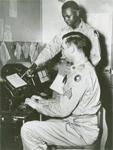
My 8th-grade students will interview a veteran and then do independent research on those battles and locations. Do you have suggestions of sites my students can hit that would have info about the various branches of military and info about battles, ships, planes, etc. where these vets served?
There are a number of wonderful sites for someone looking for background information about World War II, and the experiences of military men and women abroad and at home. Unfortunately, while there is considerable general information, the experiences of specific veterans can be widely varied—extending across the globe, and over land, sea, and air. Given the large number of units and the many changes in deployments over the course of the war, it can be difficult to find information about specific units on the web.
As a starting point, to transport your students back into the period you might start with some of the very broad overviews of the war by sites such as the History Channel. And (with proper warnings about the way they exaggerate and oversimplify) you might have them look at one of the War Department’s Why We Fight documentaries.
As they try to get a closer understanding of the specific experiences of particular service people and their units, your students can look at the materials prepared by the military services, which have substantial resources on the web (though they are a pretty clunky). For information on ground forces, they should check out the Army’s U.S. Center for Military History. Much of the material here consists of digitized version of print publication (hence the rather look), but it provides very comprehensive information about particular events.
The Naval History Center offers similar information for the U.S. Navy and Marine corps. Those are probably your best sources for information on the web at the unit level.
The National Archives also offers a treasure trove of information digitized from their collections, which includes everything from enlistment records of particular soldiers to photographs from the period. It can be hit-or-miss the closer you try to get to a specific person or unit, but it does provide some excellent examples of their specific experiences at the time.
Finally, the Library of Congress’s Veteran’s History Project provides a model of the kinds of information students might want to gather from each of the veterans they interview. Each interviewee in the database has a small fact sheet summarizing the key elements of their careers, and also offers digitized recordings of interviews with service men and women.
These are the best sources of information about World War II I have found on the web, though there are dozens of other sources available out there of widely varied quality. Most of the other sites are either extremely dated or are quite general summaries of broad themes and specific battles or events, but these sites should get your students started and on the right track.
Vietnam Online
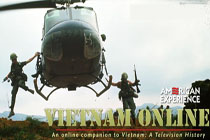
This is the companion to the PBS series, Vietnam: A Television History. David McCullough introduces the site with a 600-word essay on the war and 30-word program notes for each of the 11 episodes. Transcripts for each episode, from the "Roots of a War" to "The End of the Tunnel" are available. "Who's Who" provides photographs and profiles (50-100 words) of 41 major figures. The site provides a timeline from 1945 to 1997 including events leading up to the war, the war itself, and its results, as well as links to 50-word descriptions of events. A 600-word essay illustrated with four photographs describes Vietnam's recovery from the war. Among the 12 personal reflections of the war (300 to 900 words) provided here, visitors may read the memories of a Vietnamese-born American poet, a U.S. marine, a soldier who guarded the Ho Chi Minh trail, and a Red Cross aid worker. There are nine photographs and 3,000 words on equipment from fighter planes to boots and food. One essay (500 words) describes the My Lai massacre and another essay (1,600 words) discusses the continuing issue of prisoners of war and soldiers missing in action. This site is easy to navigate and mixes the personal and global effectively, making it useful for research into the cultural history of war.
U.S. Army Signal Corps Photograph Collection
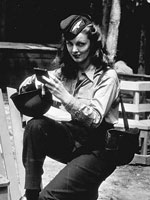
Provides nearly 3,500 photographs taken at Hampton Roads Port of Embarkation in Newport News, VA, where more than 1.5 million people arrived and departed during 1942-1946. The photographs were shot for the Army's Transportation Corps by U.S. Army Signal Corps photographers. In addition to military personnel, photos present civilian employees, Red Cross workers, wounded persons, entertainers, and German and Italian prisoners of war. In addition to Hampton Roads, seven photos were taken in Baltimore; one was shot in Chicago. Bibliographic records describe the images with information on persons, location, and date.
A special group of 34 images with descriptive captions document "The Odyssey of an American Soldier" from his arrival at Hampton Roads to his debarkation near a combat zone. Users can search images by personal name, ship name, geographic location, and keywords used in bibliographic records. Valuable for those studying military history and life at this key transportation site.
World War I History Commission Questionnaires
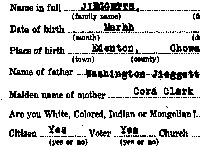
Beginning in 1919, the Virginia War History Commission compiled more than 14,900 surveys of World War I veterans in Virginia. Images of these four-page questionnaires—with additional material submitted by veterans or family members, including 1,046 photographs—have been digitized and made accessible on this site. The surveys provide basic demographic information on the soldiers and their families, as well as details of their war records, including descriptions of engagements, citations, injuries, and deaths.
In addition, the last page of the survey poses questions regarding the effect of the war and military service on states of mind and religious beliefs, as well as effects of disabilities on employment after the war. A valuable source for historians and students researching military history and the war experience.
The Vietnam Project
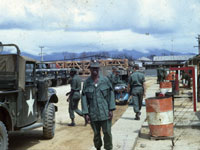
This site presents nearly 1 million pages of Vietnam War-related research materials. It includes the full text of more than 80,000 documents, 60,000 photos and slides, hundreds of interviews with veterans and other participants, streaming audio and video recordings, and much more. The more than 685,000 pages of documents include official government and military records, unit and operation action reports, unit rosters, staff journals and morning reports, personal letters, and diaries. The collection grows by some 20,000 pages of new material each month.
Visitors may find useful the Acronym Database (to help with those mysterious and persistent military acronyms). The search engine has been recently updated, and no longer supports simple searches; all searches are advanced. The archive limits the number of users at any one time, due to licensing issues, so the site may be unavailable during times of heavy use.
Convenient, powerful, and massive, this site is invaluable for research into Vietnam units, individuals, and operations.